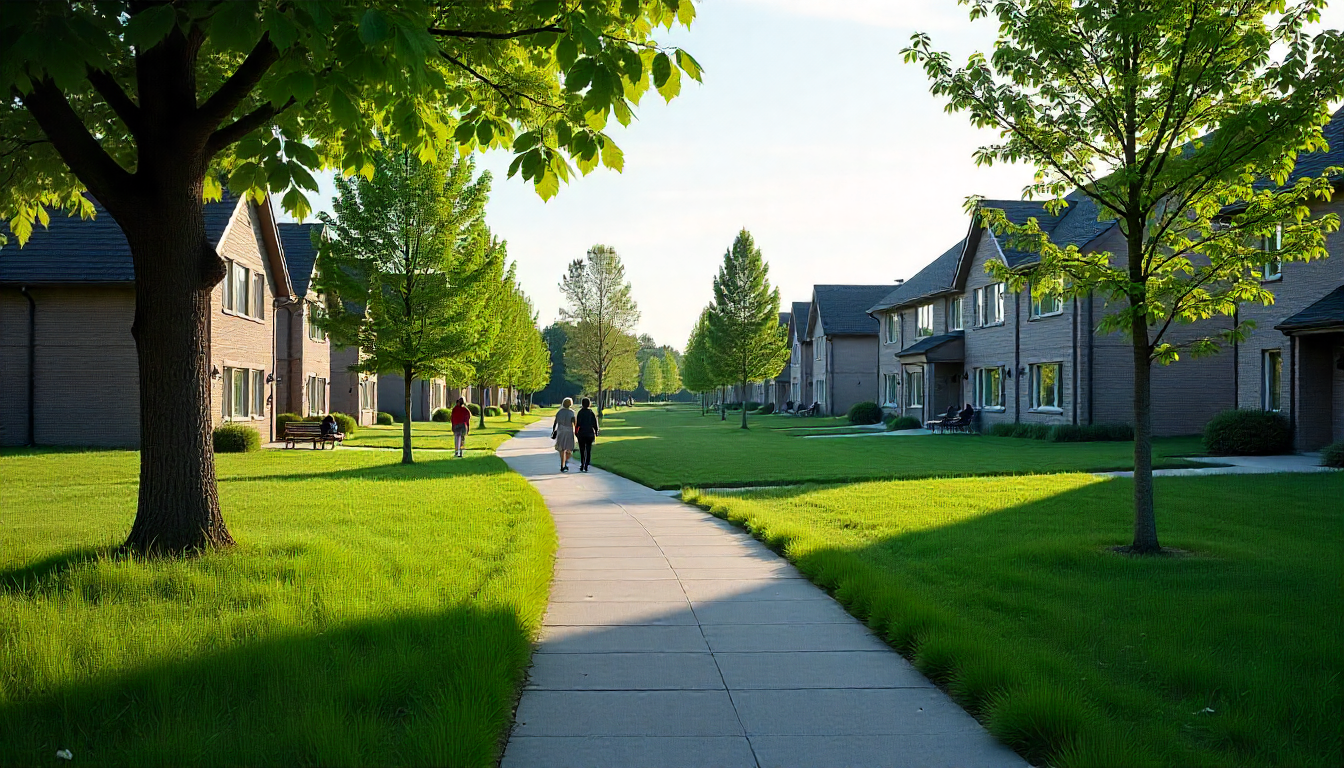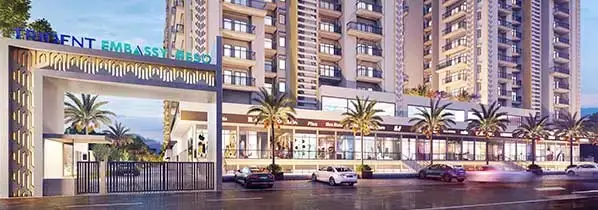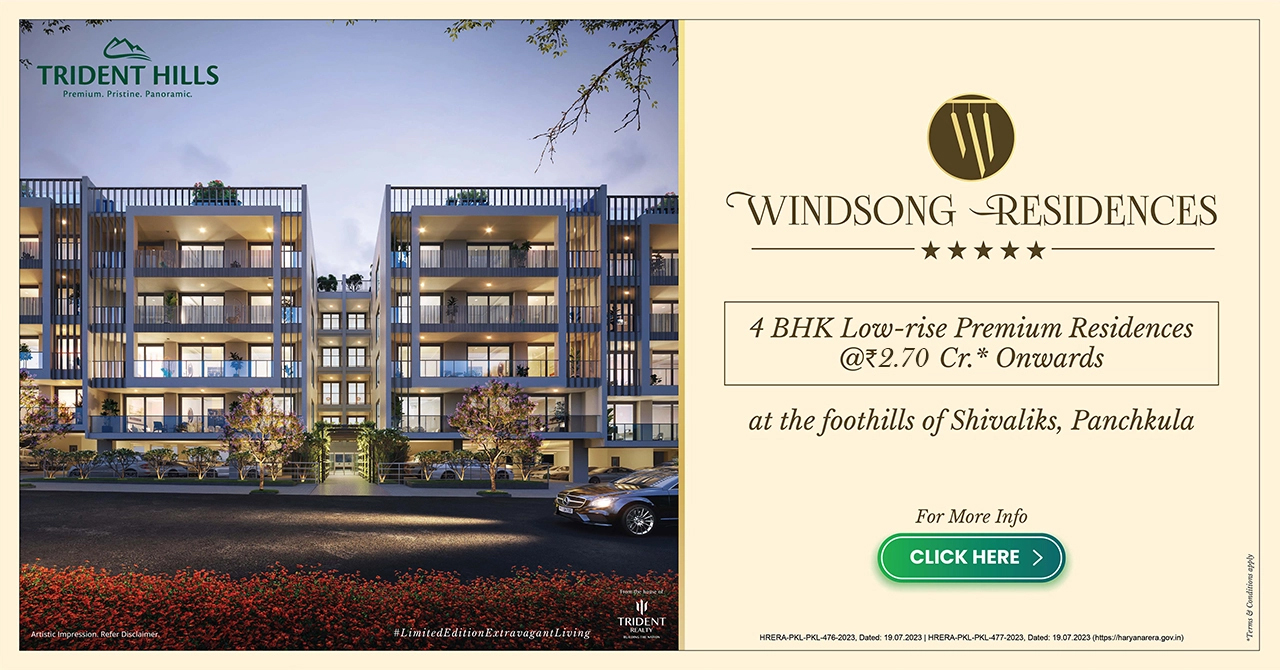
Why Premium Residential Supply Is Shrinking in Tier‑2 Cities: Q1 2025 Analysis
India’s residential real estate market—long dominated by the metropolitan juggernauts—has seen its centre of gravity shift in recent years. Tier‑2 cities such as Panchkula, Zirakpur, and Mohali have emerged as coveted addresses for homebuyers and investors alike. Historically, these markets were renowned for their affordability and mass-market appeal. However, recent data from Q1 2025 signals a stark and disruptive transformation, as housing supply in these regions contracts dramatically, and developers orchestrate a pronounced pivot towards the premium segment. A 35–54% year-on-year decline in new launches has redefined these cities, while consumption patterns and pricing have shifted to reflect new realities. Trident Realty, a major market player, exemplifies the new market dynamic—one in which the premium segment dominates discourse, demand, and development. This comprehensive analysis probes the nuances driving this pivotal change, the far-reaching implications for pricing and consumer demand, and the evolving competitive strategies that are charting the future of Tier‑2 real estate. This article delivers an evidence-backed exploration of the shrinking premium residential supply in select Tier‑2 cities, the underlying drivers of this shift, and the strategic adaptations witnessed within the market. According to PropEquity, new housing launches in India’s top 15 Tier-2 cities declined sharply by 35% in Q1 2025, falling from 45,901 units in Q1 2024 to 30,155 units. Notably, the affordable segment (<₹50 lakh) saw a 54% plunge, while mid-tier (₹50 lakh–₹1 crore) supply gained prominence, making up 48% of new launches, up from 36%. The premium ₹1–2 crore bracket also expanded its share to 23% from 18% year-on-year. City-wise data: Mohali: Mohali’s real estate market remains dynamic, with average property prices rising 9.9% YoY in Q1 2025. Sectors 79 and 85 posted a striking appreciation of nearly 80% since 2022. Zirakpur: Despite a 45% slump in launches, transaction value hit ₹630 crore, with premium plotted developments nearly sold out in top townships. Panchkula: Premium neighbourhood land prices soared to ₹12–14 crore per kanal, rivalling Chandigarh, and reflecting heightened speculative and end-user demand. Land, the most significant input in urban housing, has seen cumulative price inflation exceeding 40% across Tier‑2 markets since 2022, as reported by Knight Frank India. Materials and compliance costs, particularly for RERA and environment-led approvals, have risen sharply. Sudden spikes in input costs compress developer margins for affordable housing, squeezing viability and nudging builders towards premium, high-margin segments, where buyers are less price-sensitive and more focused on lifestyle and status. A steadily enlarging pool of upwardly mobile professionals, entrepreneurs, and diaspora families—buoyed by Tier‑2’s IT and service sector growth—is showing a clear preference for gated, amenity-rich living. The pandemic effect remains pronounced: Demand for larger configurations (3BHK upwards), study rooms, wellness offerings, and integrated WFH amenities has surged beyond the capacity of traditional affordable products. HNIs and NRIs, drawn by infrastructure and relatively moderate price points versus metros, drive sales of premium inventory. Unprecedented infrastructure investments have fundamentally altered the real estate landscape: PR-7 Airport Road linkage in Chandigarh Tricity, flyovers, and the proposed Chandigarh Metro have made previously fringe micro-markets suddenly prime. These interventions have enhanced “future value”, triggering a land rush among both developers and institutional investors who foresee steep capital appreciation. Premium projects are thus sited for strategic proximity to such infrastructure, gaining further pricing power. While RERA and digitisation have improved transparency, lack of targeted incentives or subsidies for affordable housing in Tier‑2 cities makes lower-cost supply less attractive for private builders. Industry associations are increasingly lobbying for GST rate rationalisation and lower stamp duties to curb the supply squeeze at the bottom end. Until such measures arrive, the regulatory burden will continue to weigh against budget segment launches in favour of high-value housing. Mohali witnessed a 9.9% annual rise in average property prices in Q1 2025—with premium pockets like Sector 79 and 85 showing growth above 80% over three years12. Zirakpur and Panchkula have similarly outpaced neighbouring metros, driven by increasing demand for mapped, premium developments67. With the pipeline of new launches thinning, prices of available premium stock continue to rise. In Panchkula, prime plots now match rates seen in Chandigarh, eroding the city’s affordability advantage7. The upward pressure is also evident in rental yield, with gated communities and branded developments commanding 10–12% annual rent appreciation10. The demand pool is polarising: The middle segment struggles to afford climbing prices, while affluent buyers and investors jostle for scarce premium opportunities511. Younger buyers display a preference for smart homes, integrated utilities, and wellness-driven neighbourhoods, all typically delivered by premium projects8. Despite supply shrinkage, overall sales value increased by 6% in Q1 2025 across the top 15 Tier‑2 cities, although unit sales volume declined by 8%. This points to a greater share of high-value, premium transactions13. The pivot to premium is not just happening in ticket sizes but in project philosophies. Integrated “mini-townships” brimming with clubhouses, co-working spaces, wellness zones, and boutique retail are fast replacing monolithic apartment towers. Developers are focusing on plotted developments, luxury villas, and high-rise gated enclaves—products that cater specifically to HNI, NRI, and upwardly mobile audiences seeking an upgrade. The pace of digital transformation is accelerating: Virtual walk-throughs, AI-enabled customer engagement, and VR-powered sales tools are standard among premium builders. Modern premium launches are defined not just by luxury, but also by their intelligent, responsible design: Home automation and seamless digital integration (remote lighting, climate control, and security systems). Comprehensive sustainability initiatives—rainwater harvesting, solarisation, electric vehicle charging points, and eco-friendly construction materials. Trident Realty and other serious players explicitly market “future-ready” specifications as a key differentiator for discerning clients. Large capital outlay and longer gestation periods mean only well-capitalised, establishment-backed developers can succeed in the new terrain. Smaller or over-leveraged developers are increasingly crowding out of the market, concentrating premium supply among a handful of branded players, further tightening supply and fuelling price escalation. Trident Realty’s Position: “Tier-2 cities are playing an important role in driving the growth of India’s real estate sector due to various economic factors. These cities are emerging as new realty markets and are attracting both buyers and developers. The Tri-city region is a shining example of consistent growth.”1113 Trident Realty, a vanguard name in Tricity, has perfected its response to new market realities: Developments such as Trident Hills (Panchkula), a multi-phase integrated township, and luxury mid-rise residences in Zirakpur, consistently report absorption rates upwards of 70% in the first quarter post-launch. Projects are deliberately located near growth corridors—proximity to existing and forthcoming expressways, airports, and new business parks guarantees future appreciation and enduring demand. The group targets lifestyle-driven buyers: HNIs, NRIs, and professionals who view home purchase as both a security and a status marker. Trident stands out for project scale—its land bank allows multi-year supply planning, enabling flexibility to calibrate launches as per market mood. Brand credibility, built over years of timely delivery and quality assurance, reassures buyers and pushes premiums higher compared to peers. The company’s luxury township projects are consistently rated as “investment hotspots,” with analysts at JLL and Cushman & Wakefield ranking them highest for expected capital appreciation over the 2025–27 period. Budget buyers: Increasingly squeezed out, with many now targeting satellite towns or exploring upcoming peripheries for affordable options. Premium buyers: The current phase offers both a challenge—heightened competition for best-in-class properties—and an opportunity, as picking early-stage launches in premium communities may yield significant long-term returns. The strategic reorientation towards premium will persist, supported by underlying demographics, rising input costs, and a market insulated against economic shocks. Only those with deep pockets, strong brands, and the ability to continually innovate will thrive as supply tightens further and consumer expectations rise. The growing affordability crisis warrants policy attention: targeted subsidies, tax breaks for affordable housing, and improved access to lower-cost land banks can even out the emerging supply asymmetry. Smart urban planning is key—continued infrastructure investment can ensure equitable, sustainable growth. The Q1 2025 drop in premium residential supply in India’s Tier-2 cities is not a sign of sectoral stress but a manifestation of genuine transformation. Rising costs, regulatory discipline, and discerning buyers have pushed the market towards smarter, higher-quality launches and away from mass-market proliferation. The homes that do come on stream promise more in terms of location, innovation and lifestyle—a new era of Indian real estate that places trust, reputation and community at its heart. The Data: Scale of the Supply Contraction
Decline Across the Board
Strategic Drivers Behind the Premium Housing Pivot
1. Escalating Land and Construction Costs
2. Demographic and Aspirational Shifts
3. Infrastructure Development as a Demand Magnet
4. Regulatory Reform and Policy Gaps
Effects on Pricing and Consumer Demand
Price Appreciation
Supply Scarcity Boosts Prices Further
Shifting Consumer Preferences
Impact on Transaction Volumes
Developer Strategies: Realigning for the New Premium
High-Conviction Product and Brand Moves
Technology and Sustainability as Differentiators
Facing Developer Challenges
Trident Realty emerges as a name attuned to the realities of the evolving Tier-2 playbook. According to the Group Chairman, S K Narvar:Brand, Scale and Delivery
Market Perception
Implications and Looking Ahead
For Buyers
For Developers
For Policymakers
Conclusion









